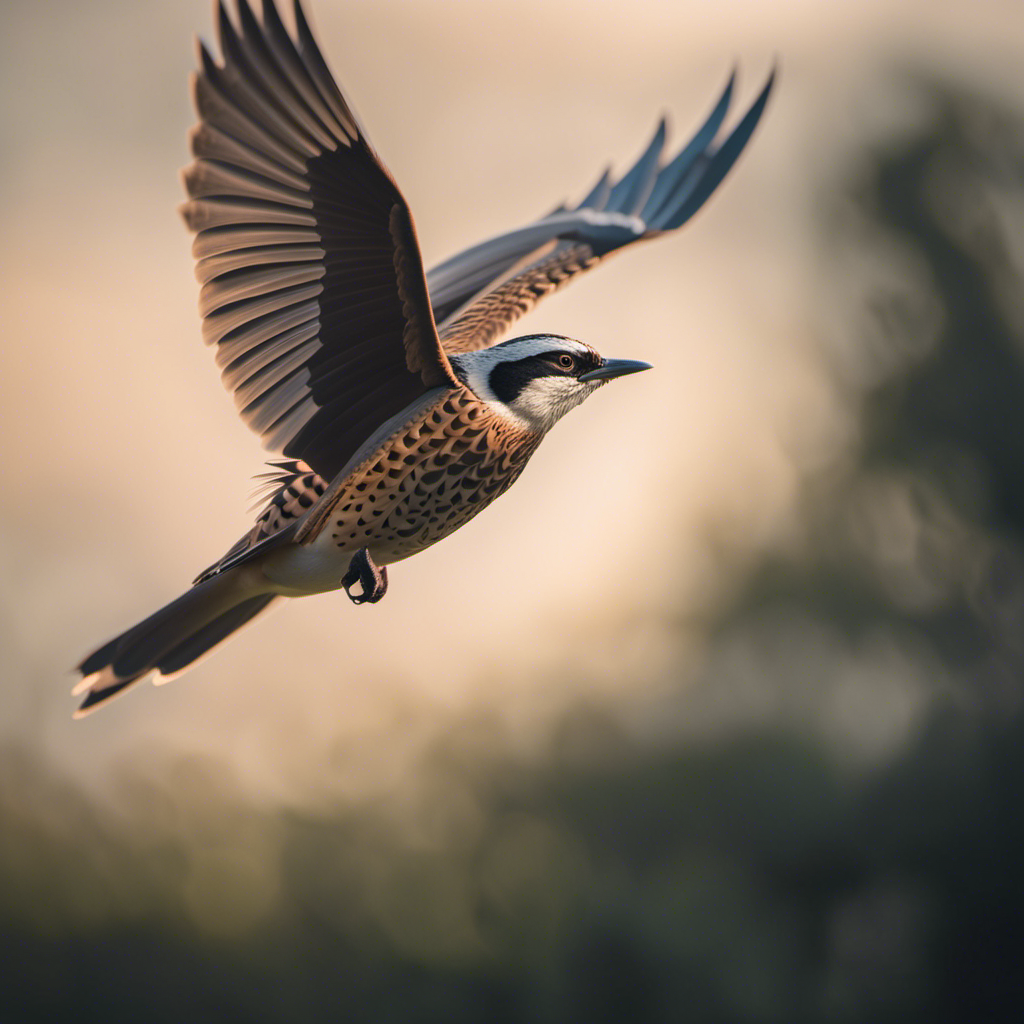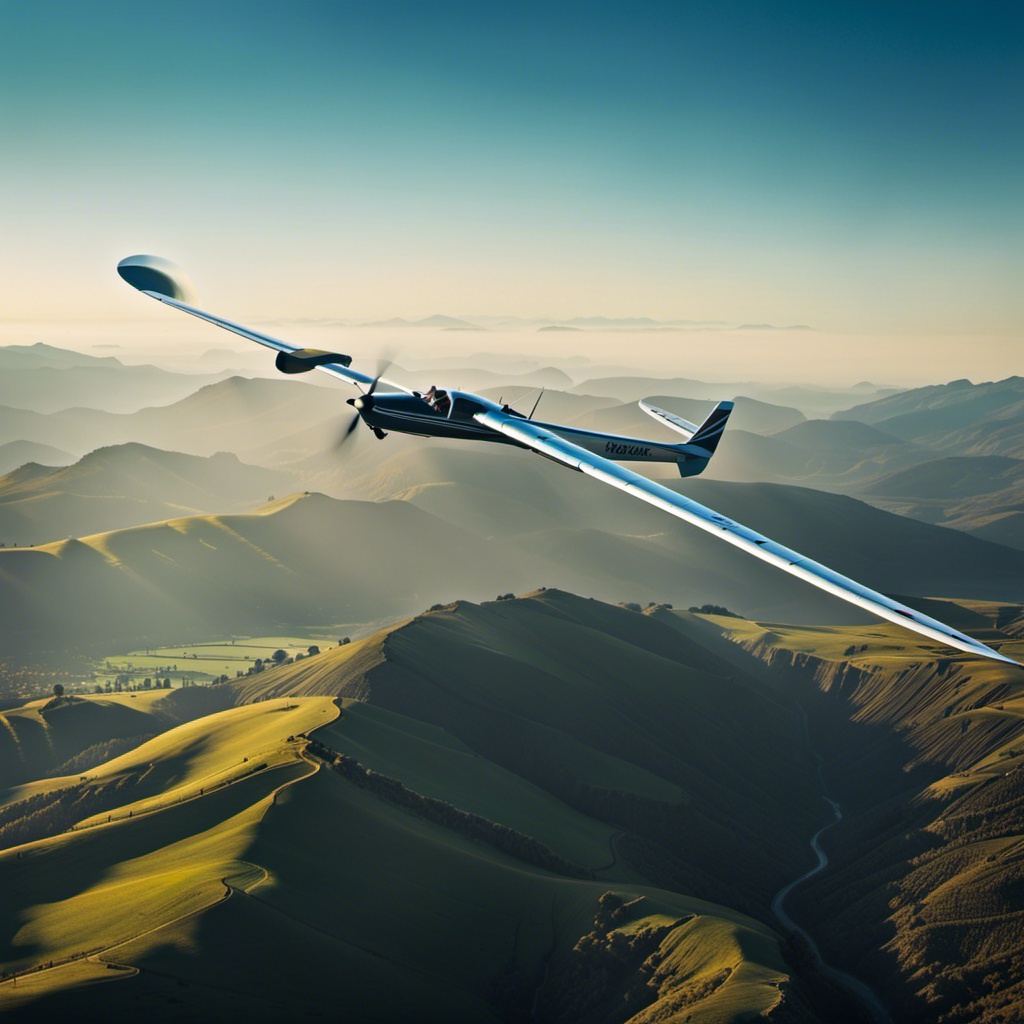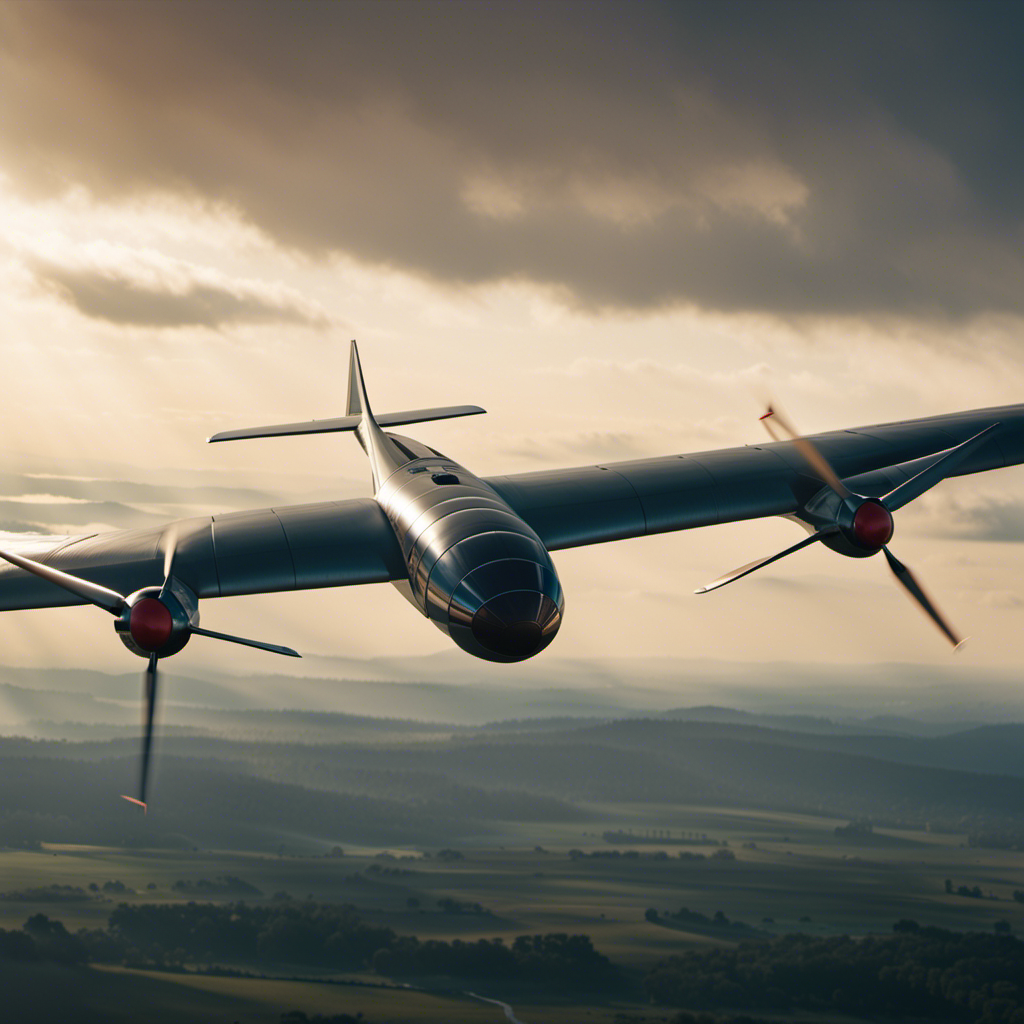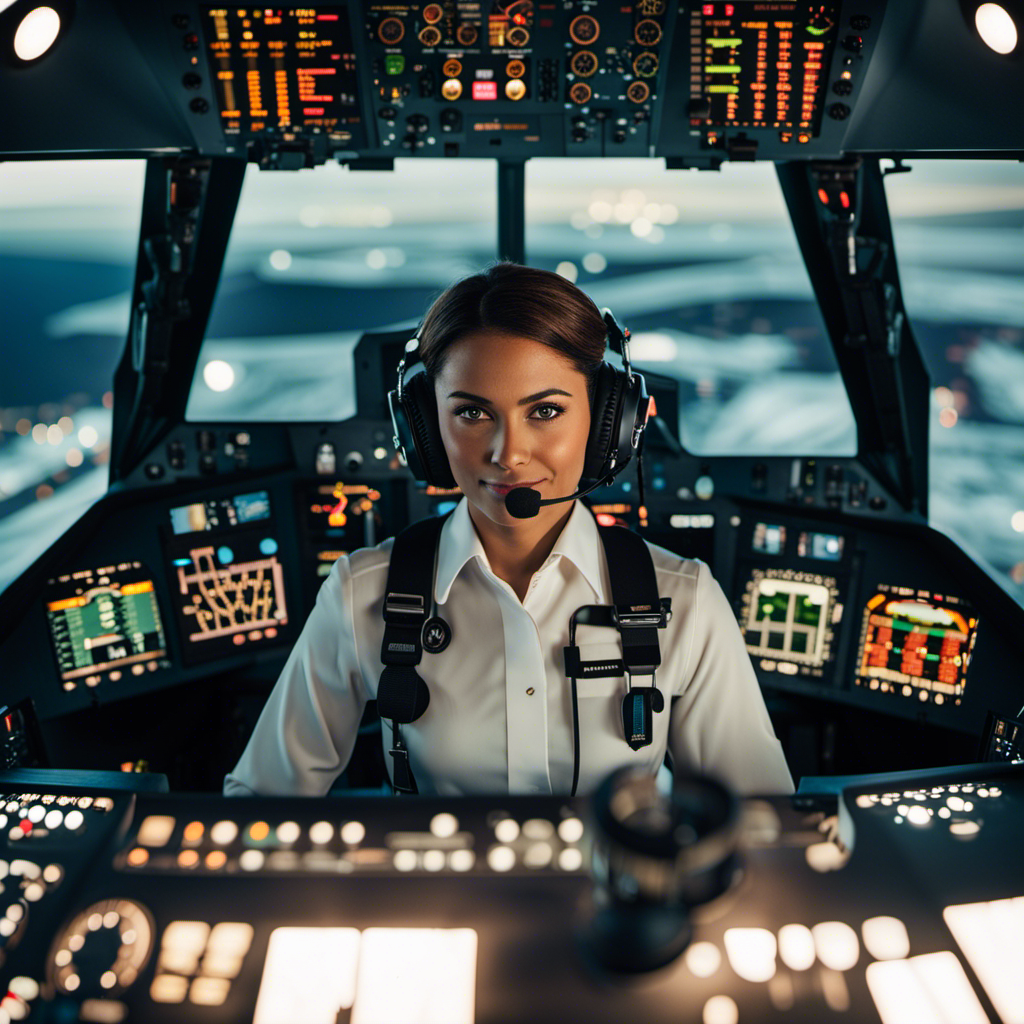Have you ever wondered how animals effortlessly glide through the sky, defying gravity with grace and precision? Prepare to be amazed as we delve into the fascinating world of gliding. Curious minds of all ages will benefit from learning about this extraordinary phenomenon. Let’s embark on this thrilling journey together!
In this article, I will unravel the secrets behind this awe-inspiring phenomenon. From the principles of aerodynamics to the design of wings in gliding animals, we will explore every aspect of gliding with a technical, detailed, and analytical approach.
So, fasten your seatbelts and get ready to soar through the wonders of gliding!
Key Takeaways
- Gliding occurs when lift is generated by the shape of the wings and the movement of air.
- The curved shape of the wings, known as an airfoil, creates a pressure difference that generates lift.
- Wing loading, the ratio of weight to wing area, affects glider performance, with lower wing loading being better for gliding.
- Thermals and ridge lift can be utilized by gliders to gain altitude and soar along ridges.
The Principles of Aerodynamics
To understand how gliding occurs, you need to grasp the principles of aerodynamics. Gliding efficiency is a critical factor in determining how far and how long an animal can glide. It is all about generating lift, which is the force that opposes gravity and allows the animal to stay airborne.
Lift is created by the shape of the wings and the movement of air over and under them. The curved shape of the wings, known as an airfoil, helps to create a pressure difference between the upper and lower surfaces of the wings. This pressure difference generates lift, which enables the animal to glide.
Understanding these principles of aerodynamics is crucial for designing the wings of gliding animals. Transitioning to the next section on wing design, let’s explore how different animals utilize these principles to achieve efficient gliding.
Wing Design in Gliding Animals
Gliding animals have wing designs that aid in their ability to stay airborne for extended periods. One of the key factors affecting glider performance is wing loading, which is the ratio of an animal’s weight to the total wing area. Animals with lower wing loading are generally better gliders, as they can generate more lift with their wings. To understand the importance of wing design in gliding animals, let’s take a look at the following table:
| Animal | Wing Shape | Wing Span (m) |
|---|---|---|
| Flying Squirrel | Broad and rounded | 0.5 |
| Sugar Glider | Patagium (skin flap) | 0.6 |
| Flying Fish | Large pectoral fins | 0.4 |
| Draco Lizard | Extended ribs | 0.2 |
As we can see from this table, different animals employ various wing designs to optimize their gliding abilities. The wing shape and span play a crucial role in determining their performance in the air. Now, let’s delve into the fascinating world of natural gliders in the animal kingdom.
Natural Gliders in the Animal Kingdom
When it comes to natural gliders in the animal kingdom, birds and their adaptations are a fascinating subject to explore. From their hollow bones and feathers to their unique wing shapes, birds have evolved numerous adaptations that allow them to glide effortlessly through the air.
Another group of animals that have mastered the art of gliding are flying squirrels and other mammals. These agile creatures have developed specialized structures, such as patagia, that enable them to glide between trees with remarkable precision.
Lastly, reptiles and insects also exhibit impressive gliding abilities. Species like the Draco lizard and the flying dragonfly use their elongated ribs and wings respectively to navigate through the air.
Birds and Their Adaptations
You can observe how birds use their adaptations to glide effortlessly through the air. The adaptive mechanisms that birds possess allow them to take advantage of their evolutionary advantages, enabling them to navigate the skies with precision and grace. Here are three key adaptations that contribute to their gliding abilities:
-
Wing Shape: Birds have a unique wing structure that allows for efficient lift and maneuverability. The shape of their wings, with a curved leading edge and a tapered trailing edge, creates an ideal balance between lift and drag, facilitating smooth gliding.
-
Feather Structure: The arrangement and structure of feathers on a bird’s wings and tail play a crucial role in gliding. Specialized feathers called primary and secondary feathers provide lift and control during flight, while contour feathers help streamline their bodies and reduce air resistance.
-
Hollow Bones: Birds have lightweight, hollow bones that make their bodies lighter and more buoyant. This adaptation not only aids in flight but also reduces energy expenditure, allowing birds to glide for extended periods without tiring.
With these adaptive mechanisms, birds have evolved to become expert gliders, effortlessly soaring through the sky.
Speaking of gliders, let’s now transition to the next section, where we will explore the gliding abilities of flying squirrels and other mammals.
Flying Squirrels and Other Mammals
If you’ve ever watched a flying squirrel in action, you’ll be amazed at how effortlessly they glide through the air. Flying squirrel behavior is a fascinating example of gliding adaptations in mammals.
These remarkable creatures have developed several adaptations that allow them to successfully glide from tree to tree. One important adaptation is their patagium, a membrane of skin that stretches between their limbs, allowing them to create a larger surface area for gliding. This membrane acts like a parachute, providing lift and reducing their rate of descent. Additionally, flying squirrels have a long tail that helps with balance and steering during flight. Their lightweight bodies and strong muscles also contribute to their ability to glide effectively.
Transitioning to the next section about reptiles and insects, it is interesting to compare the gliding abilities of mammals to those of other animals.
Reptiles and Insects
Insects and reptiles have unique adaptations for gliding. They use their wings or skin flaps to catch the air and remain airborne.
Reptiles, like the flying gecko, have evolved specialized skin flaps called patagia. These patagia stretch between their limbs and body, increasing the surface area and generating lift. This allows the reptile to glide through the air.
Insects, on the other hand, rely on their wings for gliding. Their wings are lightweight and have specialized structures that create turbulence. This turbulence generates lift and enables flight. Insects also have the ability to adjust the shape and angle of their wings, allowing for precise control in the air.
These reptile adaptations and insect flight mechanisms play a crucial role in their ability to glide and navigate their environments.
With the understanding of how insects and reptiles glide, we can now transition to the next section about thermal and ridge soaring.
Thermal and Ridge Soaring
Thermal and ridge soaring allow gliders to stay aloft for extended periods of time. Thermals are rising columns of warm air that result from uneven heating of the Earth’s surface. Gliders can use thermals to gain altitude by circling within them. The glider pilot searches for signs of thermals such as cumulus clouds or areas of dark ground. Once in a thermal, the glider can climb at rates of several meters per second.
Ridge lift occurs when wind strikes an obstacle such as a mountain or a hill, creating an upward flow of air. Gliders can use this upward flow to gain altitude and soar along the ridge. Over the years, glider performance improvements, such as increased wing efficiency and better materials, have enhanced the ability to exploit thermals and ridge lift. These techniques are essential for gliders to stay airborne for long durations.
Dynamic Soaring
When it comes to dynamic soaring, two key factors that play a crucial role are wind shear and gradient.
Wind shear refers to the change in wind speed and direction with respect to altitude, while wind gradient refers to the change in wind speed with respect to distance.
These factors are vital for glider pilots as they can be used to gain or maintain energy efficiency during flight.
Using Wind Shear and Gradient
Wind shear and gradient can be used to assist in gliding, providing valuable opportunities for energy gain and maneuverability. Wind shear refers to the change in wind speed or direction over a short distance, while gradient refers to the change in air density with altitude. These atmospheric phenomena can significantly affect the flight dynamics of a glider.
Wind shear applications in gliding involve utilizing the difference in wind speed to gain or maintain altitude. A headwind shear can provide an upward force, allowing the glider to climb or extend its flight time. On the other hand, a tailwind shear can be used to increase ground speed and cover longer distances.
Gradient effects, on the other hand, are related to changes in air density. Gliders can take advantage of thermal gradients, which are caused by variations in temperature. When encountering a thermal gradient, the glider can soar in regions of rising warm air, allowing for extended flight time and increased altitude.
Utilizing wind shear and gradient effects is crucial for maximizing energy efficiency in gliding. By understanding and strategically utilizing these atmospheric phenomena, glider pilots can optimize their flight path, conserve energy, and achieve longer and more efficient flights.
Transitioning to the subsequent section, a key aspect of maximizing energy efficiency in gliding is optimizing the use of available lift sources.
Maximizing Energy Efficiency
To maximize your energy efficiency in gliding, you need to strategically utilize the available lift sources and optimize your flight path.
Improving glide ratio and minimizing drag are crucial in achieving this goal. One way to improve glide ratio is by reducing the aircraft’s drag. This can be accomplished by ensuring a clean and streamlined surface, minimizing protrusions, and using efficient airfoil designs. Additionally, maintaining a proper angle of attack and finding the optimal balance between airspeed and lift are vital.
By carefully selecting the flight path, you can take advantage of thermals, updrafts, and ridge lift to increase your glide distance.
Transitioning into the subsequent section about human gliding techniques, it is important to understand how these principles can be applied practically.
Human Gliding Techniques
You can learn human gliding techniques by practicing proper body positioning and adjusting your weight distribution. Here are some key techniques to master:
- Maintain a streamlined body position, with arms and legs close to the body to reduce drag.
- Shift your weight forward to initiate gliding and backward to slow down or stop.
- Use your body as a rudder by tilting it left or right to change direction.
- Control your descent by bending your knees slightly and leaning forward.
- Practice controlling your gliding speed through small adjustments in body position.
To enhance your gliding experience, it is important to have the right equipment and gear. This includes a well-fitting gliding suit, helmet, and goggles to protect yourself. Additionally, using a wingsuit or parachute can provide additional control and safety.
Transitioning into the next section about gliding safety and training, it is crucial to understand the importance of proper training and following safety protocols to ensure a safe and enjoyable gliding experience.
Gliding Safety and Training
When it comes to gliding safety and training, there are several key points to consider.
Firstly, understanding basic flight maneuvers and controls is crucial for maintaining control of the glider during flight.
Secondly, being able to assess weather conditions and perform pre-flight checks is essential for ensuring a safe and successful flight.
Lastly, having knowledge of emergency procedures and landing techniques is vital for handling any unforeseen situations that may arise during a gliding session.
Basic Flight Maneuvers and Controls
Gliding occurs when a pilot adjusts the pitch, roll, and yaw controls. By manipulating these controls, the pilot can achieve controlled descent without the use of an engine. Gliding is influenced by aerodynamic principles and can be compared to bird migration patterns.
Here are the key factors that contribute to successful gliding:
- Airspeed management: Maintaining the optimal airspeed is crucial for maintaining lift and maximizing glide distance.
- Center of gravity: Properly balancing the aircraft ensures stability and control during the glide.
- Control inputs: Precise adjustments to the pitch, roll, and yaw controls allow the pilot to maintain the desired glide path.
- Energy management: Understanding how to efficiently use the aircraft’s potential and kinetic energy is essential for extending the glide.
With these factors in mind, pilots can execute smooth and controlled glides, making the most of the natural forces at play.
Transitioning to the next section, it is important to consider weather conditions and conduct thorough pre-flight checks to ensure a safe flight.
Weather Conditions and Pre-flight Checks
Before taking off, it’s important to check the weather conditions and ensure the aircraft is in proper working order. Weather patterns play a crucial role in gliding as they can affect the lift and stability of the aircraft. By observing weather patterns, such as wind direction and speed, pilots can determine the best course of action for their flight.
Additionally, equipment maintenance is essential to ensure the aircraft is safe and ready for flight. Regular inspections and checks of the aircraft’s systems, including the control surfaces, landing gear, and instruments, help identify any potential issues that could affect the flight. By properly maintaining the equipment, pilots can minimize the risk of in-flight malfunctions and ensure a safe gliding experience.
Transitioning into the subsequent section about emergency procedures and landing techniques, it is vital to be prepared for any unforeseen circumstances that may arise during the flight.
Emergency Procedures and Landing Techniques
To ensure your safety during the flight, it’s crucial to familiarize yourself with emergency procedures and practice landing techniques. In the event of an emergency landing, knowing what to do can make a significant difference. Here are some important emergency procedures to keep in mind:
| Emergency Procedure | Description | Emotional Response |
|---|---|---|
| Brace for impact | Prepare for a crash landing by assuming a protective position | Fear, anxiety |
| Evacuate the aircraft | Safely exit the aircraft as quickly as possible | Relief, urgency |
| Communicate distress | Use emergency signals or radio communication to call for help | Hope, desperation |
| Provide first aid | Attend to any injuries or medical emergencies that may have occurred | Concern, compassion |
Gliding as a Competitive Sport
You can’t deny that gliding is a thrilling and competitive sport.
In order to succeed in gliding competitions, it is crucial to employ effective competitive strategies and utilize the right gliding equipment.
Competitive strategies in gliding include maximizing speed, finding optimal lift conditions, and making strategic decisions during races.
Gliding equipment plays a significant role in achieving success in competitions. This includes having a high-performance glider that is aerodynamically efficient and equipped with advanced instruments for navigation and monitoring.
Additionally, pilots must have the necessary safety equipment, such as parachutes and emergency beacons, to ensure their well-being during competitions.
As gliding technology continues to evolve, the future of the sport looks promising. The advancements in glider design, materials, and instrumentation will further enhance the performance and safety of gliders, opening up new possibilities for competitive gliding.
The Future of Gliding Technology
In the future of gliding technology, advancements in wing design and materials will play a significant role in improving aircraft performance and efficiency. These advancements include the development of lighter and stronger materials, such as carbon fiber composites, as well as innovative wing shapes and configurations that maximize lift and reduce drag.
Additionally, the integration of electric and solar-powered systems into gliders will revolutionize the way we think about sustainable aviation, allowing for longer flight durations and reduced environmental impact.
Furthermore, the emergence of autonomous gliding and AI-assisted flight technologies will enhance safety and navigation capabilities, enabling gliders to make more precise and intelligent decisions during flight.
Advancements in Wing Design and Materials
When it comes to advancements in wing design and materials, the use of carbon fiber has revolutionized the gliding industry. Carbon fiber is a lightweight and high-strength material that offers excellent structural integrity and performance capabilities. Its superior strength-to-weight ratio allows for the creation of wings that are both strong and lightweight, enhancing the glider’s maneuverability and efficiency.
In addition to carbon fiber, other advancements in wing materials include the use of composite materials and innovative aerodynamic designs. These advancements have led to improved gliding performance, increased glide ratios, and enhanced safety features.
Moving forward, the focus will be on electric and solar-powered gliders, where advancements in wing design and materials will continue to play a crucial role in maximizing energy efficiency and extending flight duration.
Electric and Solar-Powered Gliders
With electric and solar-powered gliders, you can experience longer flight durations and increased energy efficiency thanks to advancements in wing design and materials. These technological innovations have revolutionized the world of gliding, allowing for more sustainable and environmentally friendly aircraft. Here are some key features and benefits of electric and solar-powered gliders:
-
Improved efficiency: Electric gliders utilize electric motors, which offer higher energy efficiency compared to traditional combustion engines. This translates to longer flight durations and reduced energy consumption.
-
Renewable energy: Solar-powered gliders harness the power of the sun to charge their batteries, providing a continuous source of clean energy during flight.
-
Lightweight construction: Advanced wing materials, such as carbon fiber composites, contribute to the lightweight and durable design of electric and solar-powered gliders, enhancing their overall performance.
-
Reduced emissions: By eliminating the need for fossil fuels, electric and solar-powered gliders significantly reduce greenhouse gas emissions, contributing to a greener aviation industry.
-
Lower operating costs: With fewer moving parts and lower fuel expenses, electric and solar-powered gliders offer cost-effective alternatives for enthusiasts and pilots.
Transitioning into the next section, autonomous gliding and AI-assisted flight systems have further enhanced the capabilities and possibilities of gliders.
Autonomous Gliding and AI-Assisted Flight
Autonomous gliding and AI-assisted flight systems have revolutionized the capabilities and possibilities of gliders. These advanced technologies have enabled gliders to navigate and perform maneuvers without human intervention.
Autonomous gliding relies on sophisticated algorithms and sensors to detect and respond to changes in the surrounding environment, such as wind direction and thermals. AI-assisted flight systems enhance the glider’s performance by analyzing data in real-time and making adjustments to optimize efficiency and safety.
With these advancements, gliders can now stay aloft for longer periods, travel farther distances, and even perform complex aerial maneuvers with precision. The integration of autonomous gliding and AI-assisted flight has opened up new opportunities for gliding enthusiasts and professionals alike, making gliding an even more exciting and accessible activity in everyday life.
Gliding in Everyday Life
Gliding can be observed in everyday life, such as when a paper airplane gracefully soars through the air. This phenomenon is not limited to recreational activities; it has practical applications in various fields. One everyday application of gliding is in the design of aircraft. By utilizing gliding techniques, engineers can create airplanes that are more fuel-efficient and have longer flight durations. Additionally, gliding is used in the field of sports, particularly in activities such as hang gliding and paragliding. These recreational pursuits offer individuals a thrilling experience of flying through the air without the need for powered engines. However, there are also drawbacks to gliding. One major drawback is the reliance on external factors such as wind and air currents, which can limit the control and predictability of gliding. Nonetheless, the benefits of gliding in everyday life far outweigh the drawbacks, making it a fascinating and practical phenomenon.
| Everyday Applications of Gliding | Benefits | Drawbacks |
|---|---|---|
| Aircraft design | Fuel efficiency, longer flight durations | Reliance on external factors |
| Recreational activities | Thrilling experience, no need for powered engines | Limited control and predictability |
Frequently Asked Questions
What are the advantages of gliding as a natural form of locomotion for animals?
Gliding provides animals with several advantages. It allows them to travel efficiently between trees, access new food sources, and escape predators. Additionally, gliding has a low ecological impact, as it requires minimal energy and reduces the need for extensive muscle development.
How do gliding animals navigate and control their flight path?
Gliding animals navigate and control their flight path through a combination of gliding techniques and the application of aerodynamic principles. They adjust their body position, angle of attack, and wing shape to achieve desired trajectory and maneuverability.
What are some examples of animals that use dynamic soaring for gliding?
Dynamic soaring is a technique used by certain animals, such as albatrosses and frigatebirds, to glide using wind patterns for energy efficiency. It allows for precise flight control and navigation, making it an effective strategy for long-distance travel.
How does human gliding differ from gliding in animals?
One interesting statistic is that humans can glide for longer distances than any other animal. Human gliding techniques involve the use of specialized equipment like hang gliders or paragliders, while animals rely on unique gliding adaptations.
What safety measures and training are required for individuals interested in gliding as a sport?
To participate in gliding as a sport, individuals must undergo thorough training and adhere to strict safety measures. This includes learning proper techniques, understanding weather conditions, and practicing emergency procedures to ensure a safe and enjoyable gliding experience.
Conclusion
In conclusion, gliding is a fascinating phenomenon that occurs when an object or animal is able to achieve sustained flight without the use of an engine. Throughout this article, we have explored the principles of aerodynamics, the design of wings in gliding animals, and the different techniques used by gliders to stay aloft.
One interesting statistic to note is that the world record for the longest glider flight is currently held by Klaus Ohlmann, who flew a distance of 3,008 kilometers without any engine assistance. This incredible feat showcases the potential of gliding as a competitive sport and highlights the advancements in gliding technology.
As we continue to develop and refine our understanding of gliding, it is clear that this mode of flight will play an increasingly important role in everyday life.
With a heart that soars as high as the skies, Aria, affectionately known as “Skylark,” is the driving force behind Soaring Skyways. Her journey into the gliding world began as a young dreamer gazing up at the soaring birds, yearning to experience the weightlessness and freedom they embodied. With years of experience both in the cockpit and behind the scenes, Aria’s commitment to the gliding community is unwavering.










